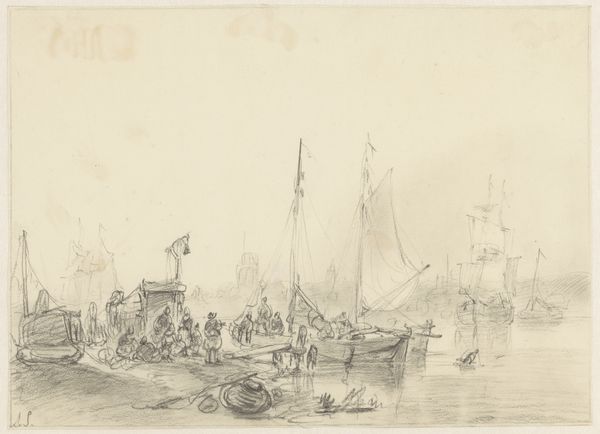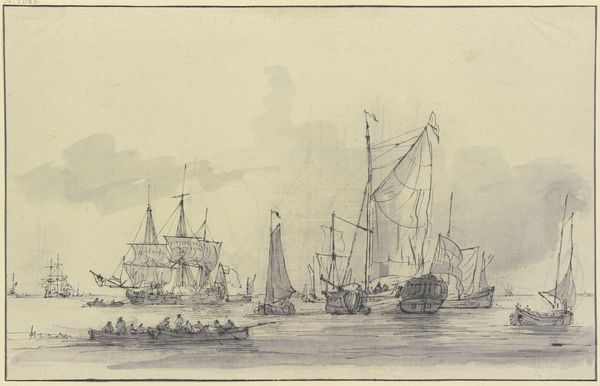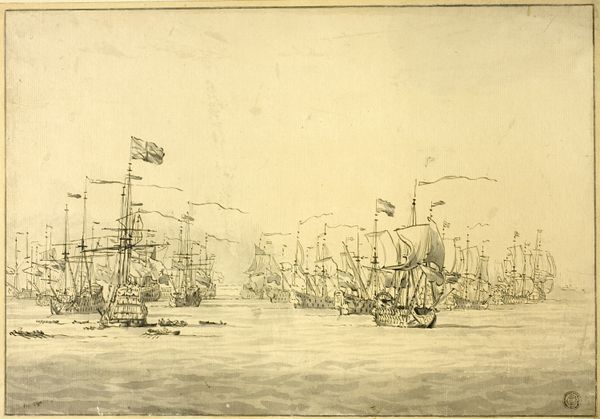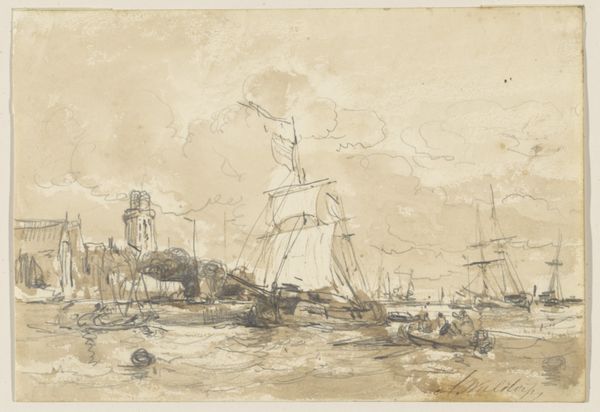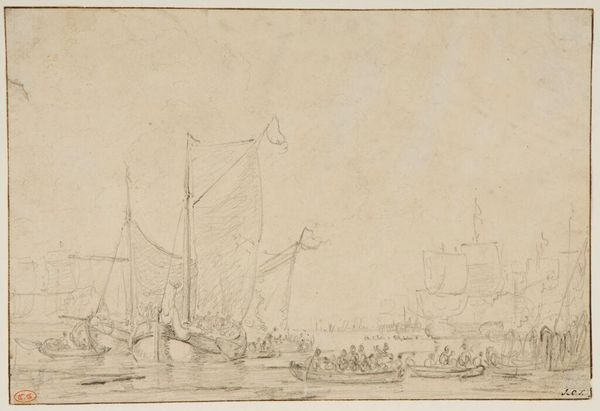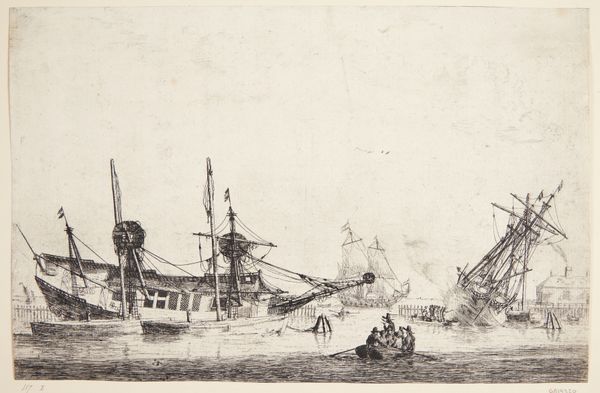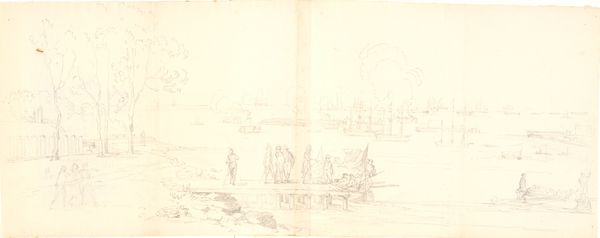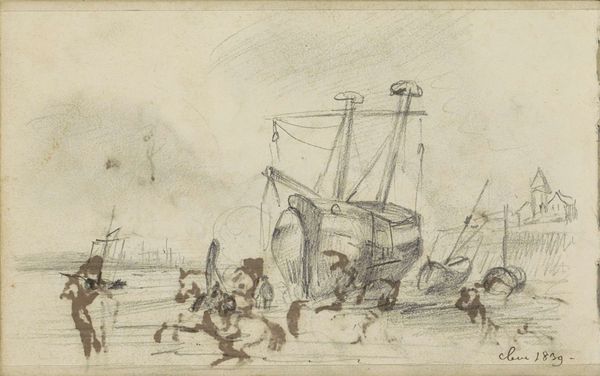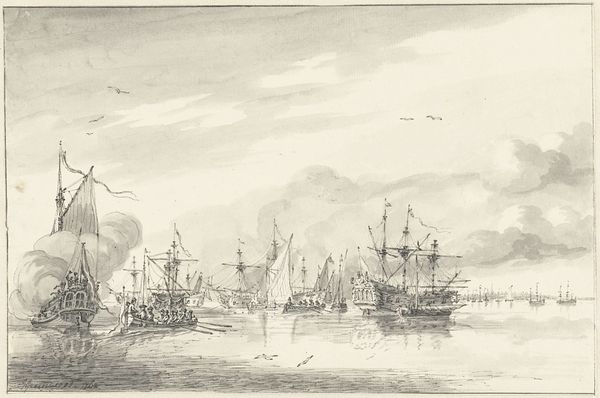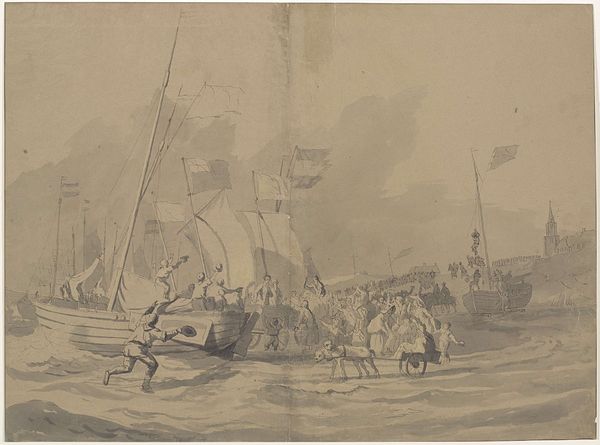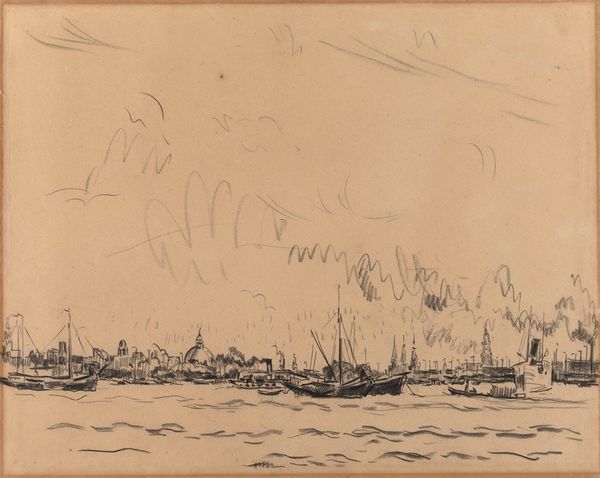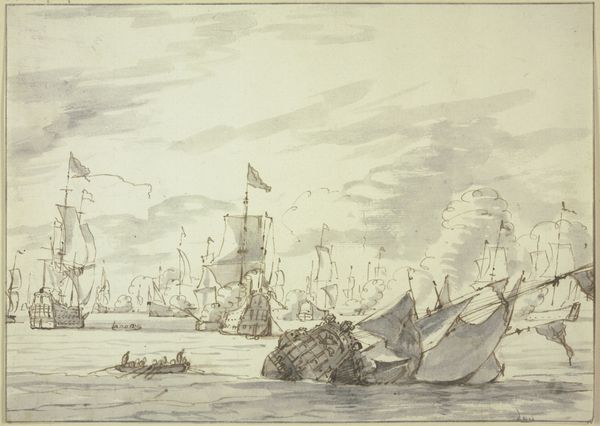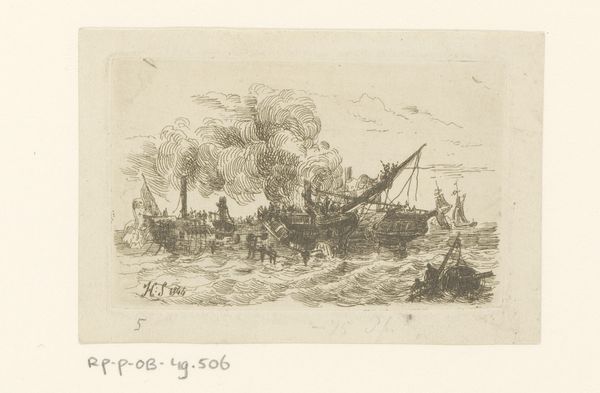
Die spanische Flotte wird im Jahr 1631 von holländischen Schiffen auf der Schelde erobert 1698
0:00
0:00
drawing, ink
#
drawing
#
netherlandish
#
baroque
#
landscape
#
ink
#
sketchwork
#
14_17th-century
#
cityscape
#
history-painting
Copyright: Public Domain
Editor: This ink drawing by Jan Luyken, created in 1698, depicts a dramatic naval battle, titled 'The Spanish Fleet Conquered on the Schelde by Dutch Ships in 1631.' I am struck by the energy of the piece. It feels raw and immediate, a real moment captured. What stands out to you? Curator: Considering Luyken’s position as a late 17th-century artist reflecting on events of the 1630s, the work becomes fascinating as a commentary on Dutch power, material culture, and shipbuilding practices of the time. The sketch work reveals how these Dutch victories weren’t simply about superior strategy but about access to crucial resources. How do you interpret the prevalence of the city reflected here? Editor: So you’re seeing a connection between the availability of resources for shipbuilding and the Dutch victory? It's almost as if the city itself is a participant in the battle, a source of wealth and strength. Curator: Precisely. The means of production become visible within the artistic style and material reality of the Dutch maritime successes. Luyken shows us the result but, more importantly, invites consideration of the foundations on which that triumph was built. I’d even argue this "sketchwork" mimics the construction methods, emphasizing process. Do you think there are more references here than first apparent? Editor: I didn’t consider how much the process itself contributes to its impact. Looking at the drawing through that lens gives it new weight. Curator: The materials—the ink, the paper—along with the subject, direct us toward thinking about commerce, labor, and how national narratives are constructed, aren't they? Editor: Absolutely. Thinking about the material conditions brings the whole scene alive, it gives it a foundation. I now have a much deeper appreciation for how Luyken embedded those contexts into this piece. Curator: Indeed. The artist presents us with history, but through the conscious selection and arrangement of his materials, he asks us to consider how that history was made, literally and figuratively.
Comments
No comments
Be the first to comment and join the conversation on the ultimate creative platform.
